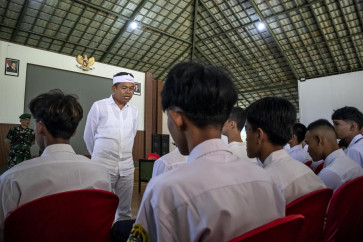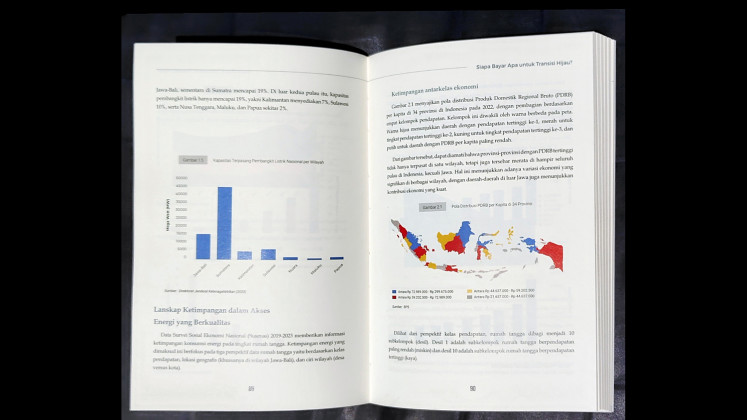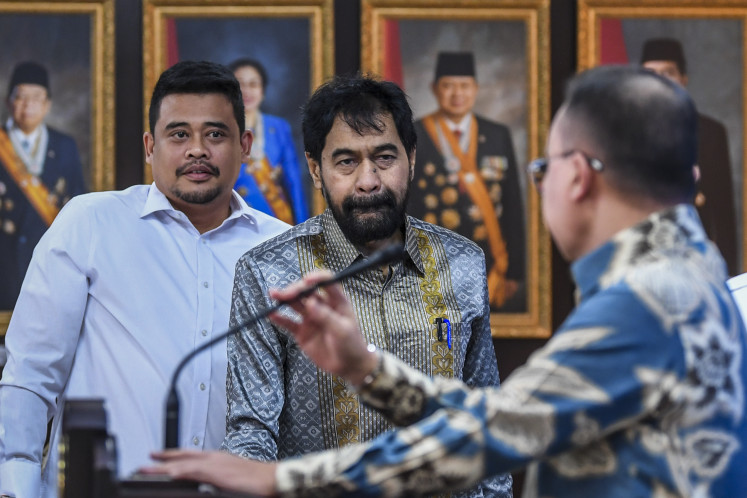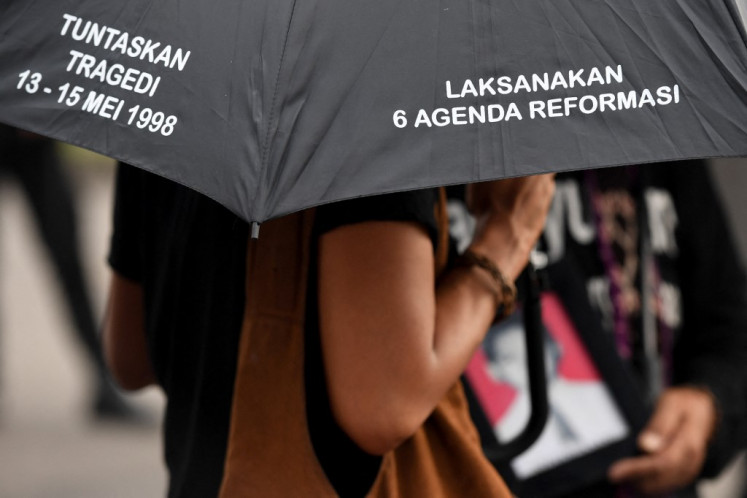Popular Reads
Top Results
Can't find what you're looking for?
View all search resultsPopular Reads
Top Results
Can't find what you're looking for?
View all search resultsSmall footprints: Sustainability on rise in Indonesian architecture
Sustainability is on the rise in architectural design in Indonesia.
Change text size
Gift Premium Articles
to Anyone
 Energy-saving: Built above an elevated stage where locals often gather, the Taman Bima Microlibrary in Bandung, West Java, was shortlisted for the 2019 Aga Khan Award for Architecture. (A.Kurniawan Ulung/-)
Energy-saving: Built above an elevated stage where locals often gather, the Taman Bima Microlibrary in Bandung, West Java, was shortlisted for the 2019 Aga Khan Award for Architecture. (A.Kurniawan Ulung/-)
T
he Taman Bima Microlibrary does not need air-conditioning to comfort its visitors. It also does not need light bulbs to brighten up the place for those reading books, as direct sunlight comes through 2,000 upcycled ice cream buckets arranged on the building’s façade, producing a pleasant indoor light ambiance.
Placed between vertical steel ribs spanning from floor to roof, the buckets also enable ventilation that brings fresh air to the room. When moved, they present a binary coding of a message that reads Buku adalah Jendela Dunia (Books are the Window to the World).
Designed by SHAU Architects, the Taman Bima Microlibrary at Bima Park in Bandung, West Java, was built atop a pre-existing stage where locals like to hang out and hold gatherings, events and sport activities.
The eco-conscious library seeks to instill a reading in the community with the overall mission to combat Indonesia’s low literacy rate.
The Taman Bima Microlibrary – which was shortlisted for the 2019 Aga Khan Award for Architecture – was introduced during the Indonesian Architecture Conference & Exhibition (ARCH:ID) held by the Indonesian Architects Association (IAI) from Feb. 27-29 at Indonesia Convention Exhibition (ICE) in Tangerang, Banten.
Curated by architects Andra Matin, Danny Wicaksono and Wiyoga Nurdiansyah, the exhibition showcased a variety of installations, such as Inisiatif Scriptura by Each Other Company and Studiodasar, Lapis by ARA Studio, Beauty of Nature by Conwood Indonesia and Reliving Gedek by Modernscape.
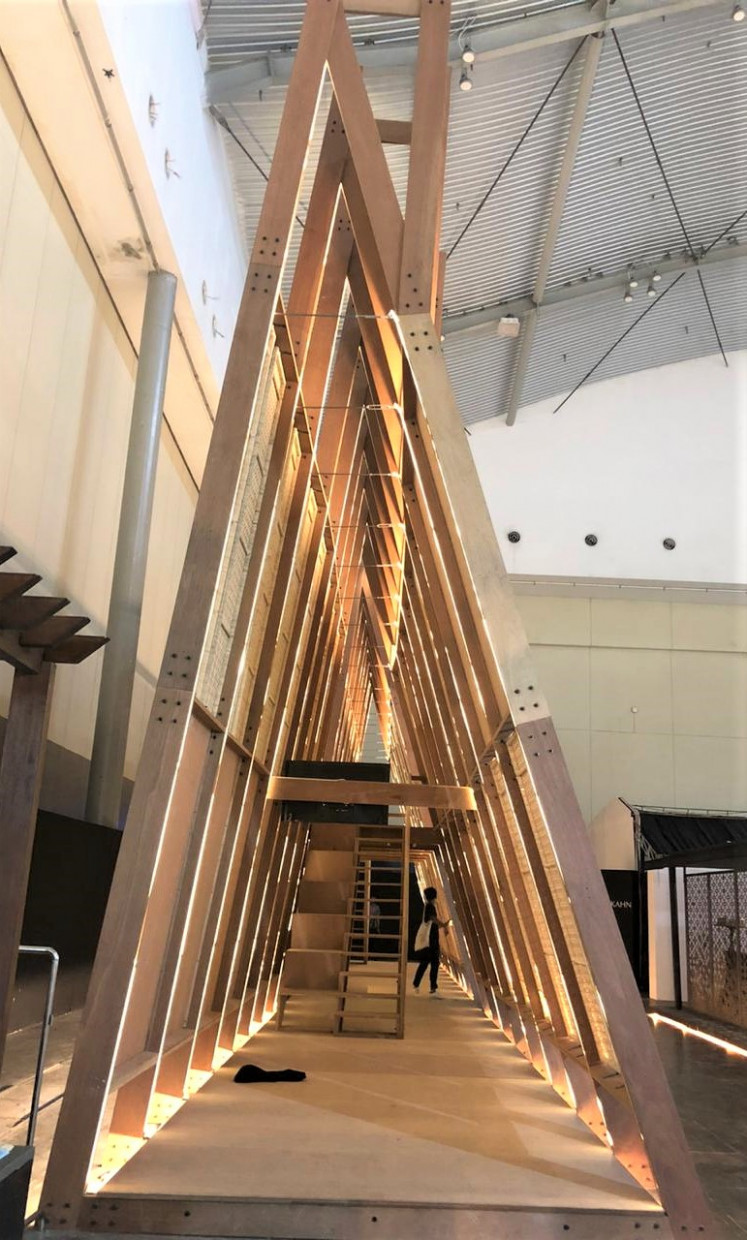
Like the Taman Bima Microlibrary, the Reliving Gedek installation echoes sustainable design. It is a huge triangle with wooden pillars and knitted rattan panels as its main materials.
Rattan was chosen as an alternative to gedek (woven bamboo) that is traditionally used as a material for walls in vernacular houses in tropical areas, particularly Java. The wood products used in Reliving Gedek is produced by Kayu Lapis Indonesia, a wood company that implements zero-waste principles at its factories to ensure that it utilizes all parts of wood processed, from tree bark to sawdust.
Danny said the creation, showcased at ARCH:ID, has nothing to do with a trend in architectural design.
“I personally don’t believe there is such a trend. When we [curators] discussed and made a concept about this event, we did not talk about directing [exhibitors] to follow any trend or try to create a trend for this year, next year or upcoming years,” he said.
For Wiyoga, what matters in architecture is not an aesthetic trend but the capacity of an architect in creating designs in the right way – meaning their works have to match not only the climate of the areas where a building will be constructed but also the clients’ social characteristics.
“For Indonesian clients, for example, the terrace must be wide, because Indonesians like to gather,” he said.
His work, Rumah Swadaya (Swadaya House), was designed for Indonesia’s tropical climate. It uses a lot of perforated metals in a bid to let fresh air sneak in and allow sunshine to play as natural light inside the house.
The design, which won an IAI Award, was inspired by the rumah panggung (wooden stilt house) in Kalimantan.
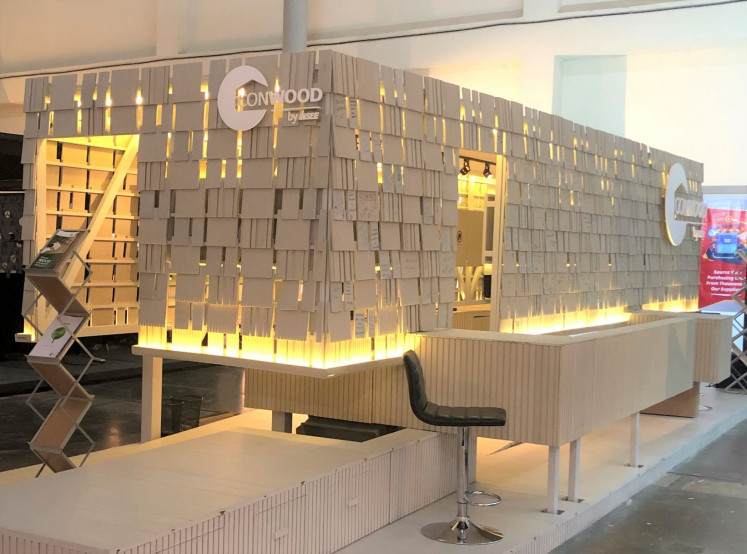
Danny noted that the digital era we live in give architects more channels to communicate their ideas and market their works.
However, he said, this development also posed a big challenge for them to maintain ethics – not only as a professional architect but also as part of society as well as to become more authentic in translating their creativity and innovations into designs that solve problems in society rather than just jumping on a bandwagon.
Wiyoga said the internet and social media had given Indonesian architects more sources to learn, but a large amount of information they can access easily and quickly today could also have negative consequences if they did not select carefully.
“The design of a building may be good in one country, but that does not mean it can be applied in Indonesia, because the climate in these two countries is different,” he said. “The digital era, for me, is a double-edged sword.”
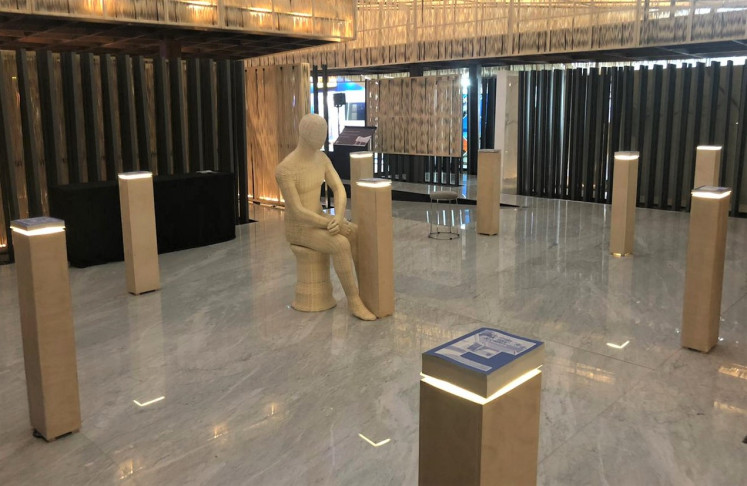
One of the issues Indonesian architects face to date, Wiyoga says, was the lack of translated books on architecture.
At the exhibition, this problem is highlighted by Inisiatif Scriptura, in which translated versions of Jane Jacobs’s The Death and Life of Great American Cities and Alice Rawsthorn’s Design as an Attitude, are on display to encourage more stakeholders to buy the publishing rights of good architecture books to boost their Indonesian translations as reference for Indonesian students to learn.
Wiyoga believes architects will play bigger roles in the country, thanks to President Joko “Jokowi” Widodo, who is pushing for progress on infrastructure projects, especially in East Kalimantan as the site of the country’s future capital.
A design contest for the new site, which was won by architecture studio URBAN+, was praised by Wiyoga.
He raised hope the central government would roll out more contests in the future to encourage more architects to show the best designs they could create rather than appointing certain architects to handle infrastructure projects.
IAI chairman Ahmad Djuhara said the development of a nation’s civilization could be observed through the design of its buildings.
In Indonesia, he said, design had yet to get the recognition it deserved. “Local governments in some areas have yet to appreciate design,” he said. “We are still fighting for it.” (ste)

